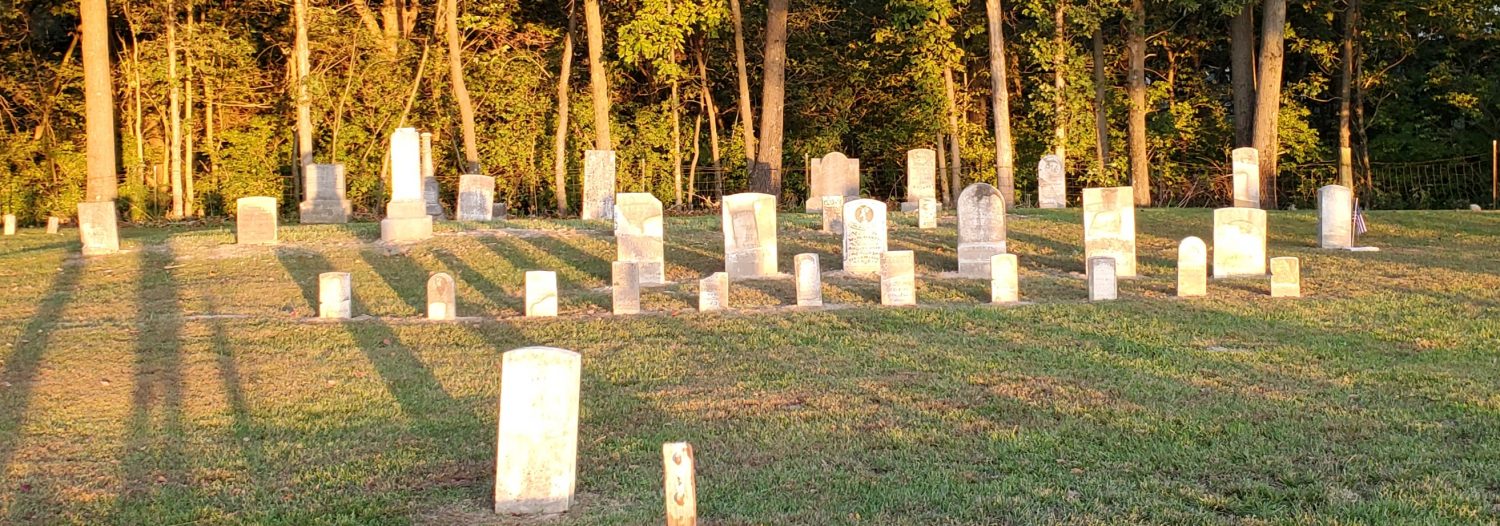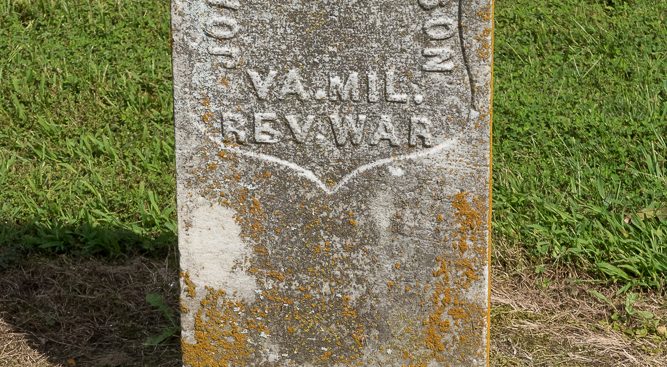This week, with it being Veteran’s Day tomorrow, I wanted to focus on John Thompson’s military service during the Revolutionary War. Thompson’s service is the reason why he ends up in Greene County, Illinois and his widow Winnefred Brickey Thompson later would be awarded a widow’s pension from the State of Illinois after his death in 1843.
Thompson’s service is well documented through the pension application. Thompson served under two captains with the Virginia militia at the tail end of the Revolutionary War. According to the pension records, Thompson served under Captain Henry Pawling and then under Captain David May serving in two major battles in Virginia.
Pawling is an interesting commander. Pawling was born in 1752 in a farm opposite Valley Forge , Pennsylvania from a prominent family out of New York. Pawling was taken prisoner after the capture of forts Montgomery and Clinton and was confined on the prison ships “Archer” and “Myrtle” in New York harbor for nearly two years. He was released in a prisoner exchange and appears again as captain on May 11, 1780, and again in 1783. He kept an extensive diary during his Revolutionary War years. Those diaries, I believe, are in possession somewhere in New York State somewhere. Pawling’s brothers also rose to prominence through their service through the Revolutionary War. Captain Pawling died in 1836 and is buried in Old Hagaman Cemetery in Montgomery County, New York.
Captain May is somewhat more of a mystery, but is listed as a member of the Virginia militia out of Botetourt County, Virginia. He was likely a neighbor of John Thompson’s.
Thompson’s first service comes as part of a regiment of Virginia and North Carolina militia at the Battle of Guilford Court House on March 15, 1781 in what is now Greensboro, North Carolina. A 2,100-man British force under the command of Lieutenant General Charles Cornwallis defeated Major General Nathanael Greene‘s (Greene County, Illinois’ namesake ironically) 4,500 Americans. The British Army, however, suffered a considerable number of casualties during the battle. It was one of the largest battles in the Revolutionary War’s southern theatre. While the battle was a loss for the Continental Army, it would set in motion the undoing and eventual surrender of the British at Yorktown. Thompson was a part of the second line of defense in the battle that lasted approximately 90 minutes. The victory cemented Cornwallis’ hubris in believing he could go to Virginia and take the state, leaving Greene to his own devices. Over the next few months, Greene would retake the southern states and drive Cornwallis into the Battle of Yorktown. Thompson would return home and marry Winnefred on June 20, 1781.
Thompson appeared at the Siege of Yorktown in September 1781 with the rest of the Virginia militia and was said to be present on the same field as General George Washington. Thompson was likely present for the entire siege, which involved the entire Virginia militia over three weeks. The militia served under General Thomas Nelson, a signer of the Declaration of Independence and was the 4th Governor of Virginia. Thompson was also likely acquainted with Brigadier General Edward Stevens who was wounded at Guilford Courthouse and later returned to lead the 3rd Brigade at Yorktown for the militia. Stevens was almost captured and killed outside of Yorktown while healing from his thigh wound.
Thompson’s legacy was honored by the General George Rogers Clark Chapter of the Sons of the American Revolution in September 2017 with a grave marking ceremony at Thompson Cemetery for his service to the nation during its founding. The chapter serves the majority of counties in West Central Illinois in various capacities.
By: Benjamin T. Cox
Jacksonville IL
Veterans Day November 11, 2020

